JOURNAL ARTICLES
“The Question of Access: Toward an Equitable Future of Computational Design.” International Journal of Architectural Computing, 2021.
Vernelle A.A. Noel, Yana Boeva, Hayri Dortdivanlioglu


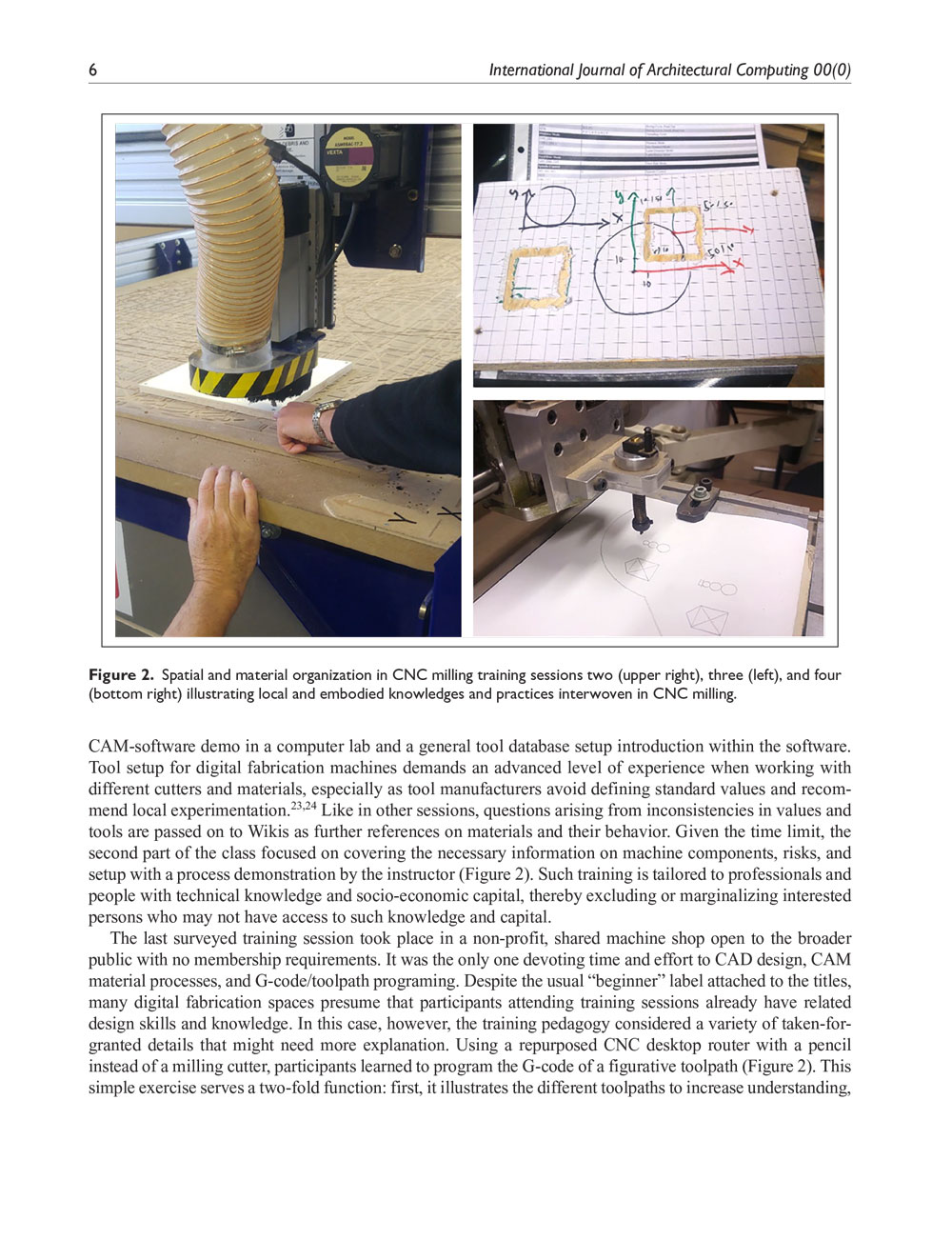
Digital fabrication and its cultivated spaces promise to break disciplinary boundaries and enable access to its technologies and computation for the broader public. This paper examines the trope of “access” in digital fabrication, design, and craft, and illustrates how it unfolds in these spaces and practices. An equitable future is one that builds on and creates space for multiple bodies, knowledges, and skills; allows perceptual interaction and corporeal engagement with people, materials, and tools; and employs technologies accessible to broad groups of society. By conducting comparative and transnational ethnographic studies at digital fabrication and crafting sites, and performing craft-centered computational design studies, we offer a critical description of what access looks like in an equitable future that includes digital fabrication. The study highlights the need to examine universal conceptions and study how they are operationalized in broader narratives and design pedagogy traditions.
“Post-Human Flâneurs of Atlanta: Mapping Surveillance Fields on the North Avenue Smart Corridor.” Catalyst: Feminism, Theory, Technoscience Journal, 2021.
Hayri Dortdivanlioglu
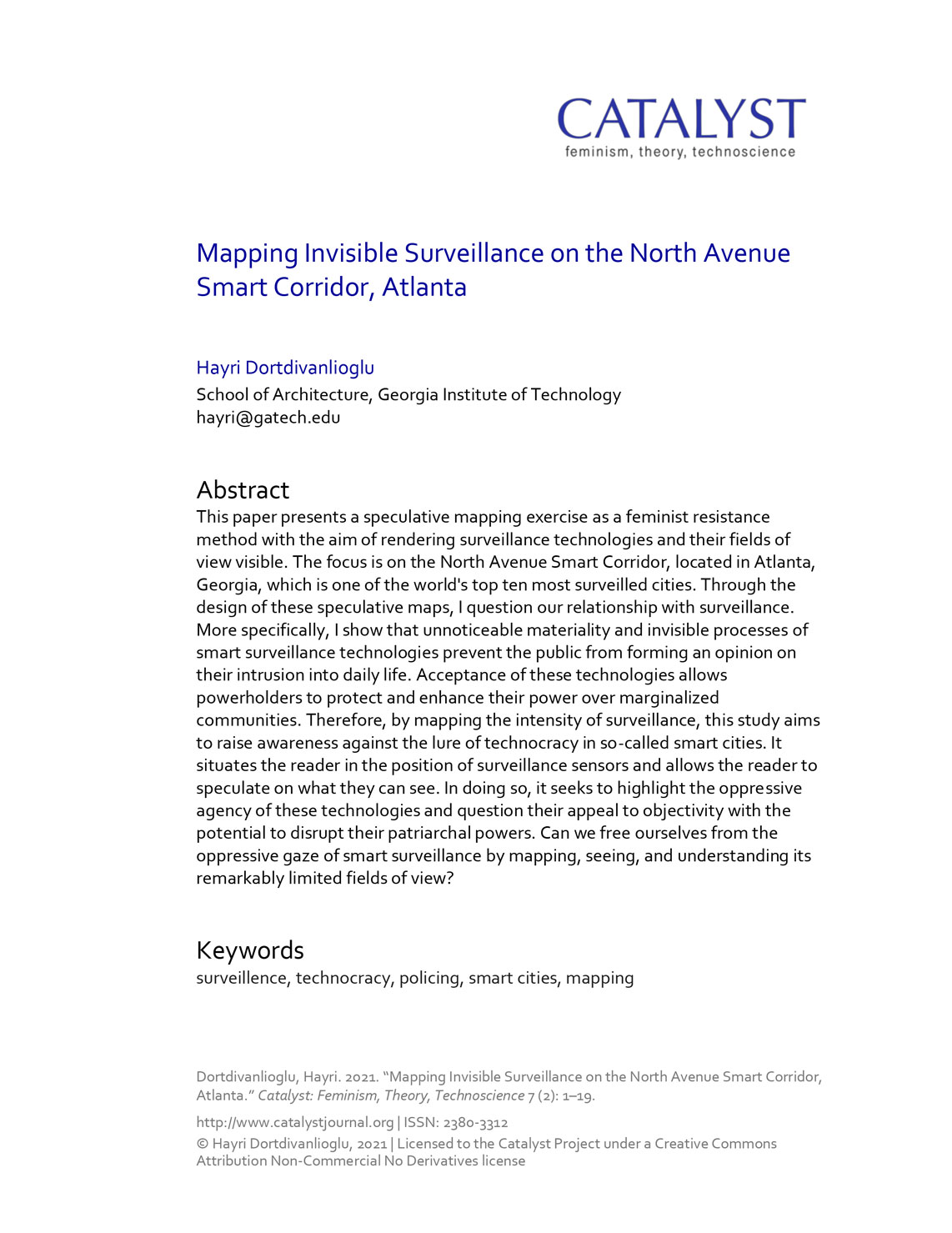

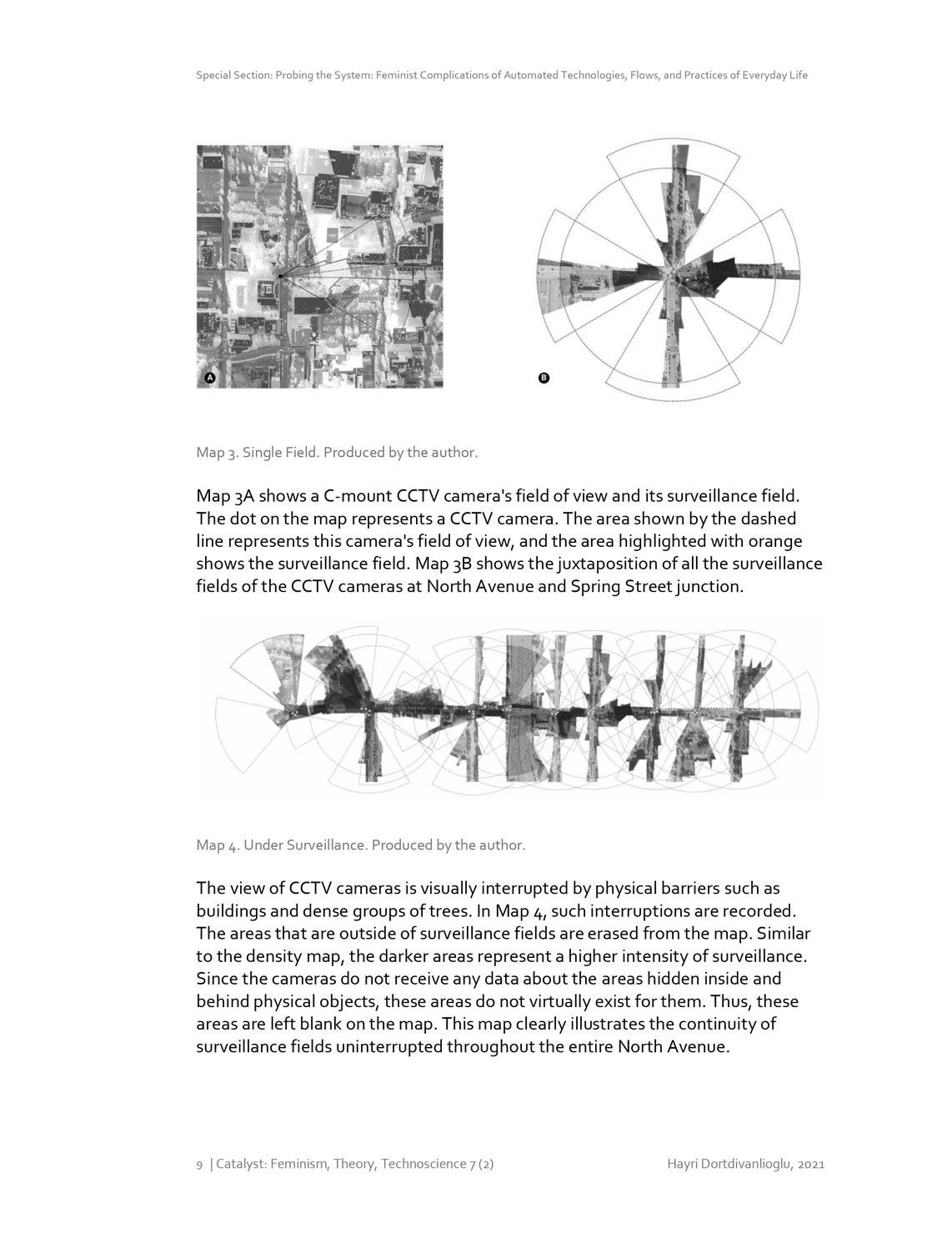
This paper presents a speculative mapping exercise as a feminist resistance method with the aim of rendering surveillance technologies and their fields of view visible. The focus is on the North Avenue Smart Corridor, located in Atlanta, Georgia, which is one of the world's top ten most surveilled cities. Through the design of these speculative maps, I question our relationship with surveillance. More specifically, I show that unnoticeable materiality and invisible processes of smart surveillance technologies prevent the public from forming an opinion on their intrusion into daily life. Acceptance of these technologies allows powerholders to protect and enhance their power over marginalized communities. Therefore, by mapping the intensity of surveillance, this study aims to raise awareness against the lure of technocracy in so-called smart cities. It situates the reader in the position of surveillance sensors and allows the reader to speculate on what they can see. In doing so, it seeks to highlight the oppressive agency of these technologies and question their appeal to objectivity with the potential to disrupt their patriarchal powers. Can we free ourselves from the oppressive gaze of smart surveillance by mapping, seeing, and understanding its remarkably limited fields of view?
“Weaving Fabrica and Ratiocinatio: An Inquiry into Knowledge of Architecture in Vitruvian Theory.” Divergence in Architectural Research, Vol. 1, 2021.
Hayri Dortdivanlioglu
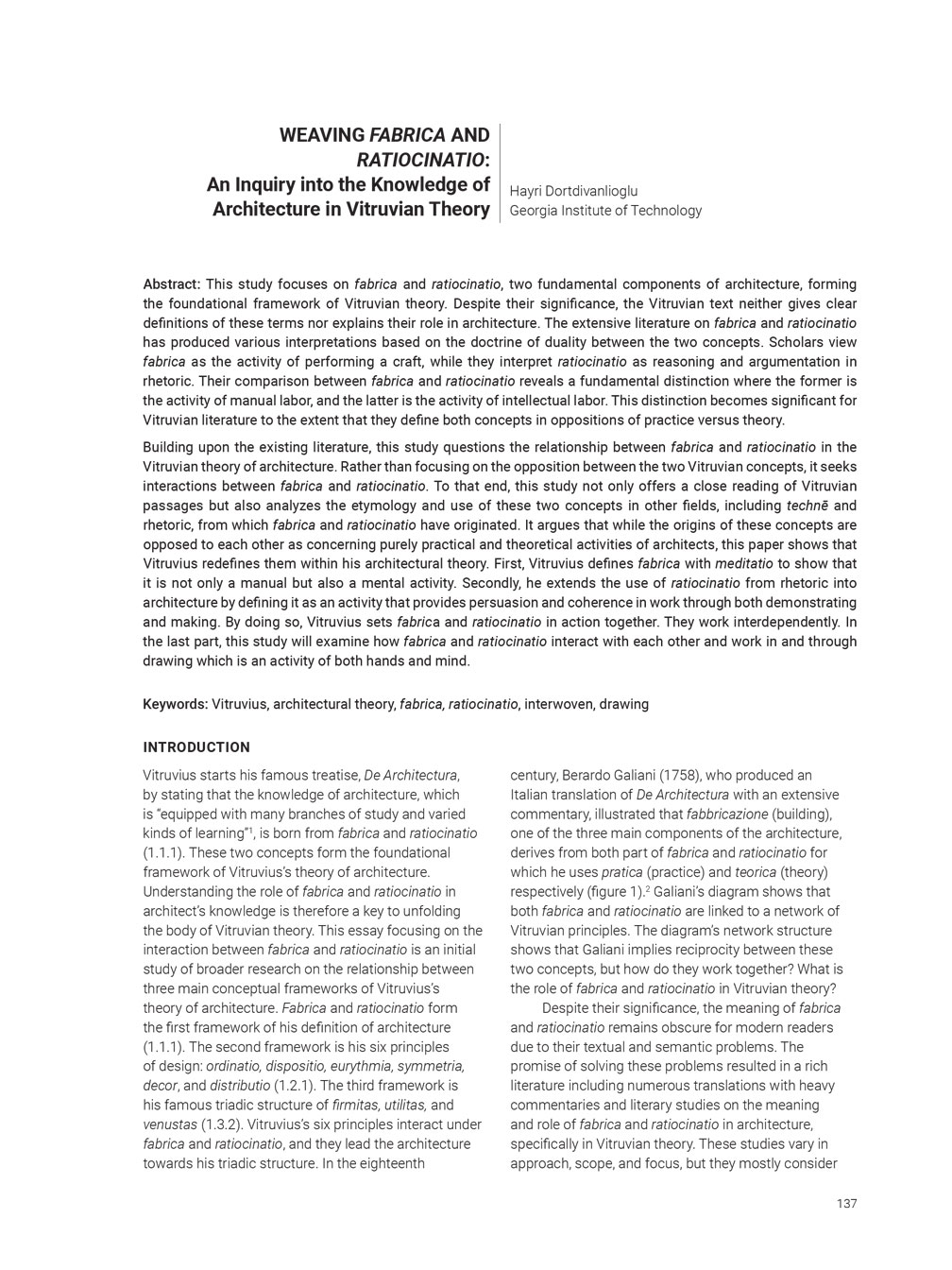
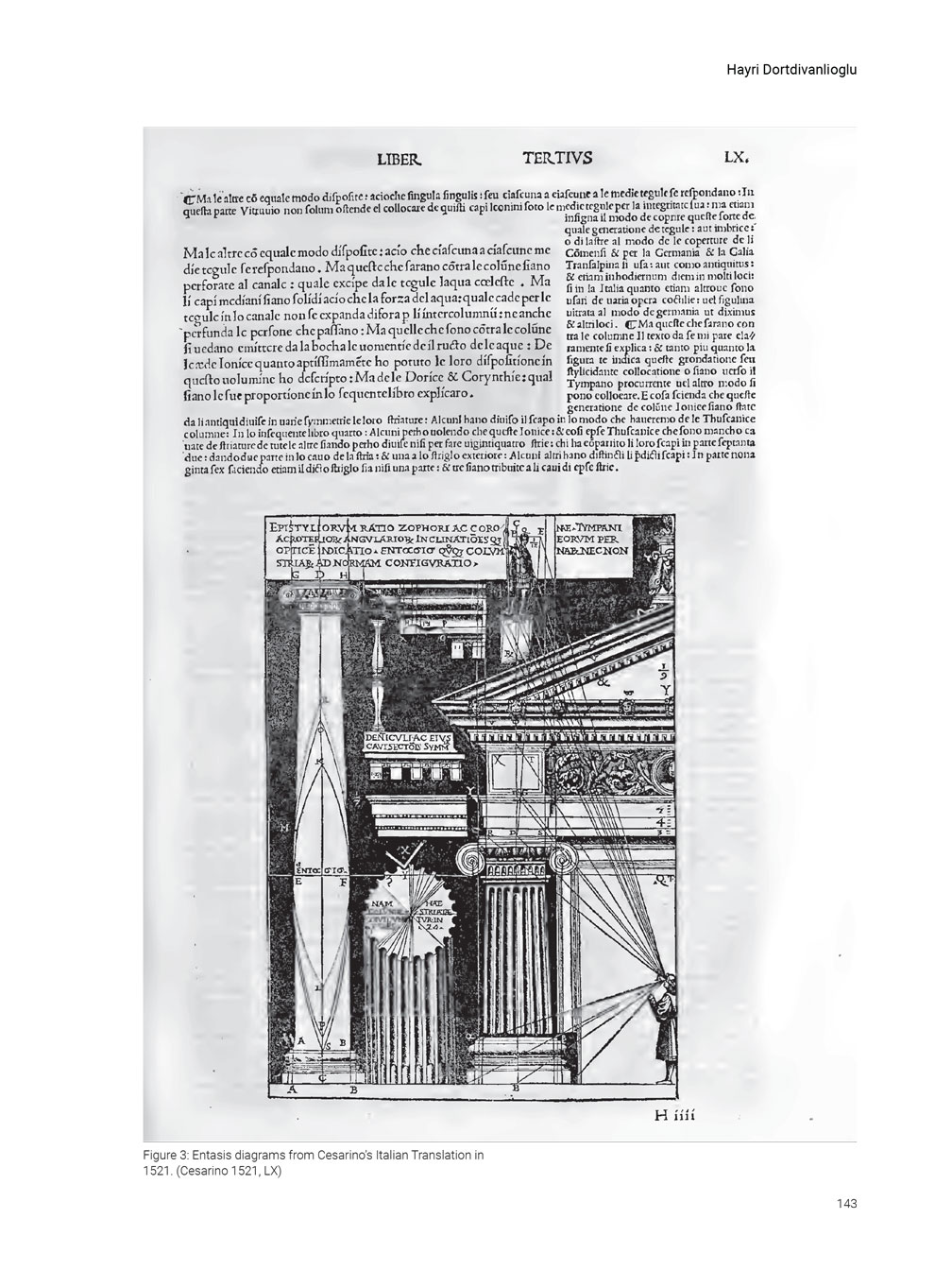
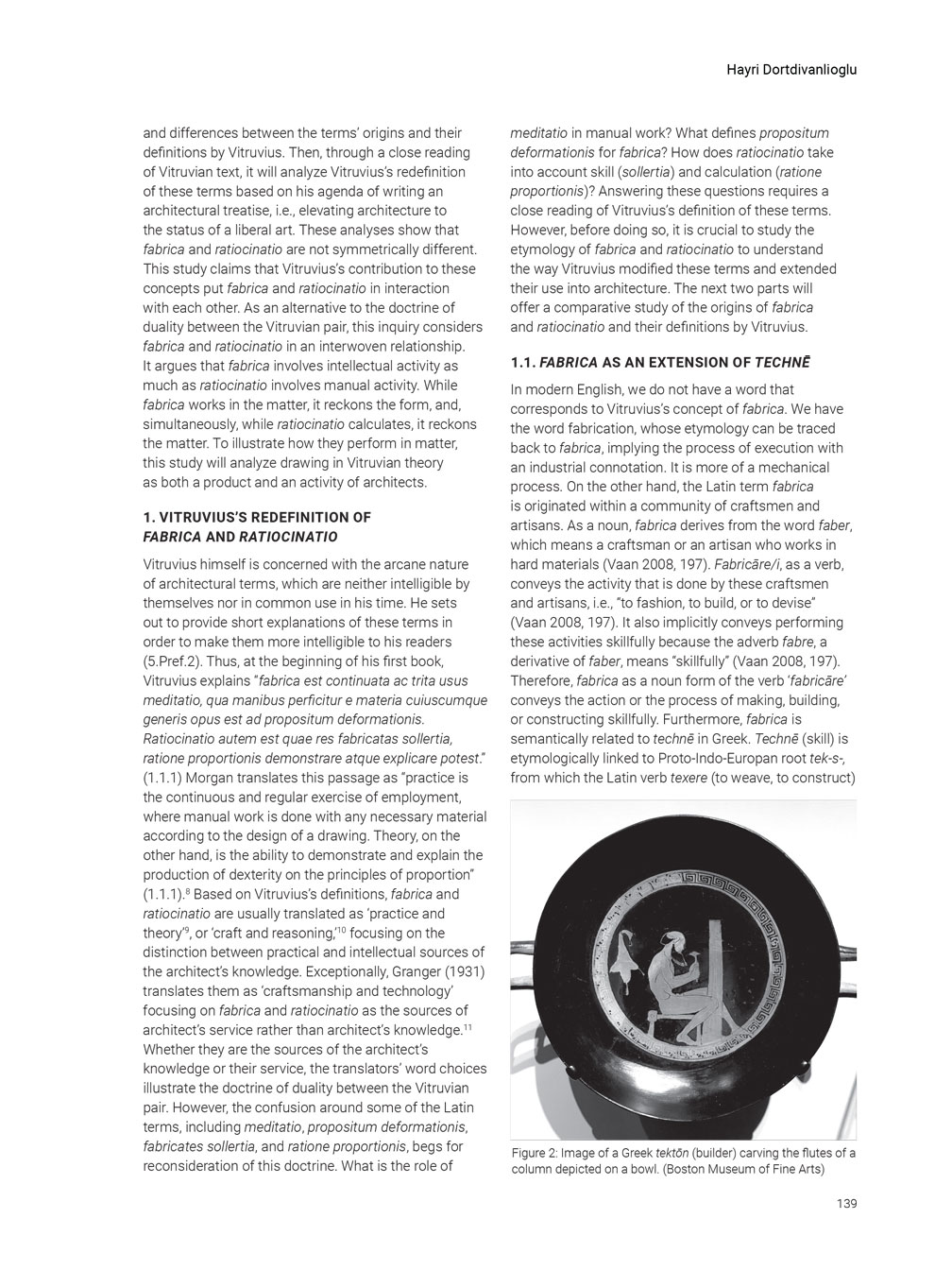
This study focuses on fabrica and ratiocinatio, two fundamental components of architecture, forming the foundational framework of Vitruvian theory. Despite their significance, the Vitruvian text neither gives clear definitions of these terms nor explains their role in architecture. The extensive literature on fabrica and ratiocinatio has produced various interpretations based on the doctrine of duality between the two concepts. Scholars view fabrica as the activity of performing a craft, while they interpret ratiocinatio as reasoning and argumentation in rhetoric. Their comparison between fabrica and ratiocinatio reveals a fundamental distinction where the former is the activity of manual labor, and the latter is the activity of intellectual labor. This distinction becomes significant for Vitruvian literature to the extent that they define both concepts in oppositions of practice versus theory.
Building upon the existing literature, this study questions the relationship between fabrica and ratiocinatio in the Vitruvian theory of architecture. Rather than focusing on the opposition between the two Vitruvian concepts, it seeks interactions between fabrica and ratiocinatio. To that end, this study not only offers a close reading of Vitruvian passages but also analyzes the etymology and use of these two concepts in other fields, including technē and rhetoric, from which fabrica and ratiocinatio have originated. It argues that while the origins of these concepts are opposed to each other as concerning purely practical and theoretical activities of architects, this paper shows that Vitruvius redefines them within his architectural theory. First, Vitruvius defines fabrica with meditatio to show that it is not only a manual but also a mental activity. Secondly, he extends the use of ratiocinatio from rhetoric into architecture by defining it as an activity that provides persuasion and coherence in work through both demonstrating and making. By doing so, Vitruvius sets fabrica and ratiocinatio in action together. They work interdependently. In the last part, this study will examine how fabrica and ratiocinatio interact with each other and work in and through drawing which is an activity of both hands and mind.
Building upon the existing literature, this study questions the relationship between fabrica and ratiocinatio in the Vitruvian theory of architecture. Rather than focusing on the opposition between the two Vitruvian concepts, it seeks interactions between fabrica and ratiocinatio. To that end, this study not only offers a close reading of Vitruvian passages but also analyzes the etymology and use of these two concepts in other fields, including technē and rhetoric, from which fabrica and ratiocinatio have originated. It argues that while the origins of these concepts are opposed to each other as concerning purely practical and theoretical activities of architects, this paper shows that Vitruvius redefines them within his architectural theory. First, Vitruvius defines fabrica with meditatio to show that it is not only a manual but also a mental activity. Secondly, he extends the use of ratiocinatio from rhetoric into architecture by defining it as an activity that provides persuasion and coherence in work through both demonstrating and making. By doing so, Vitruvius sets fabrica and ratiocinatio in action together. They work interdependently. In the last part, this study will examine how fabrica and ratiocinatio interact with each other and work in and through drawing which is an activity of both hands and mind.